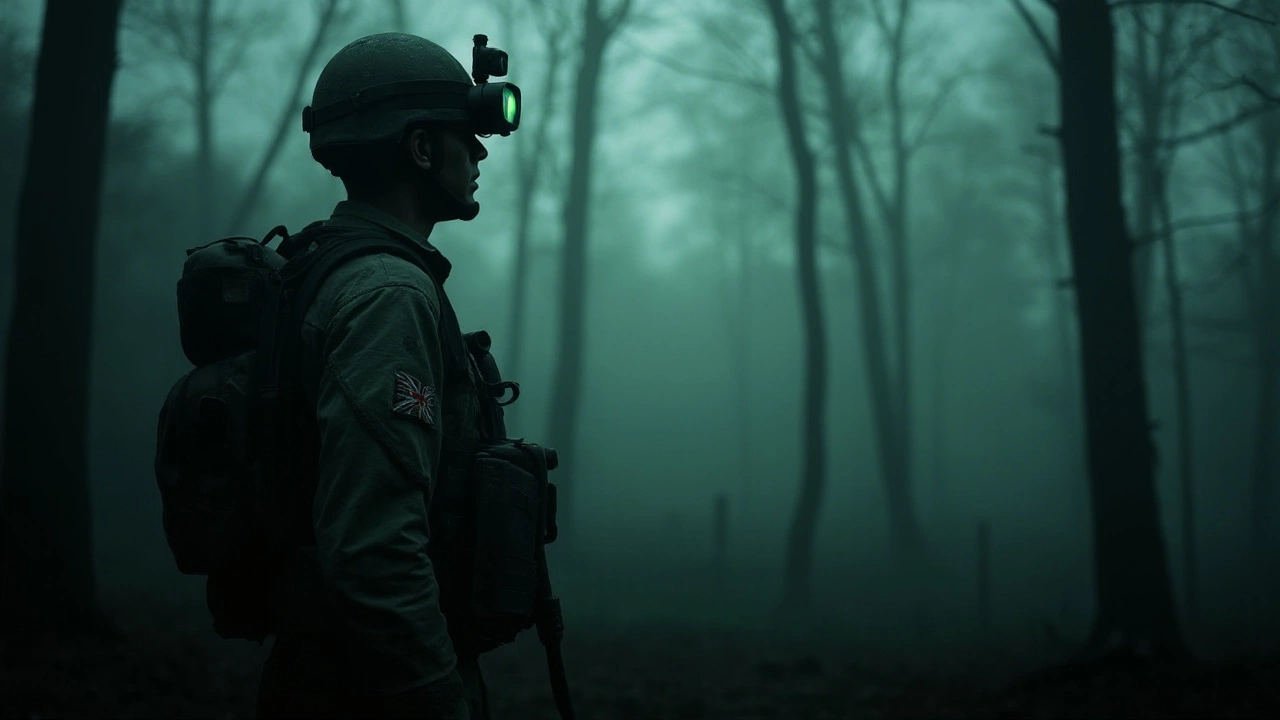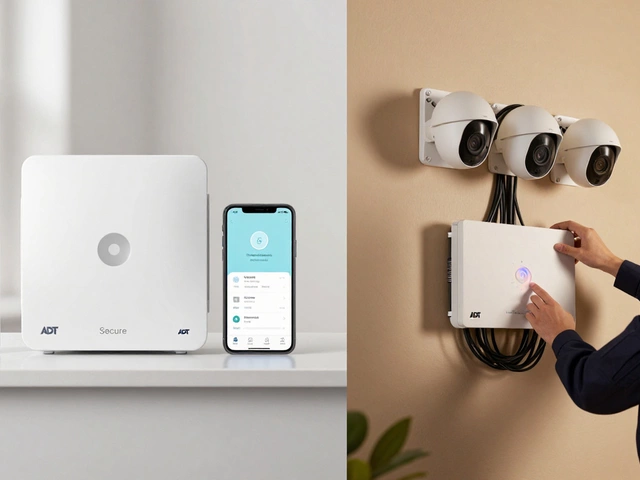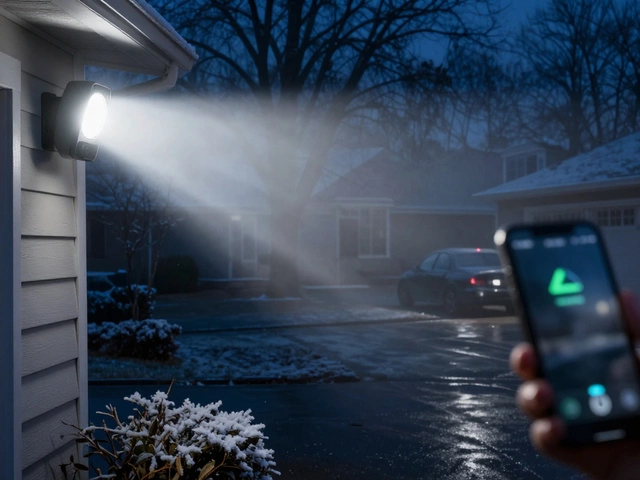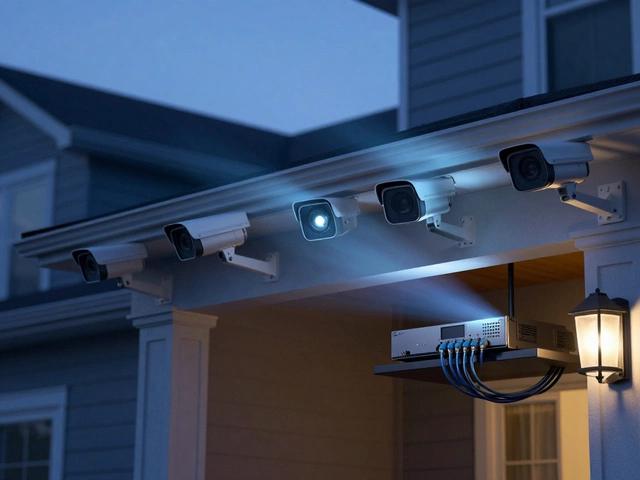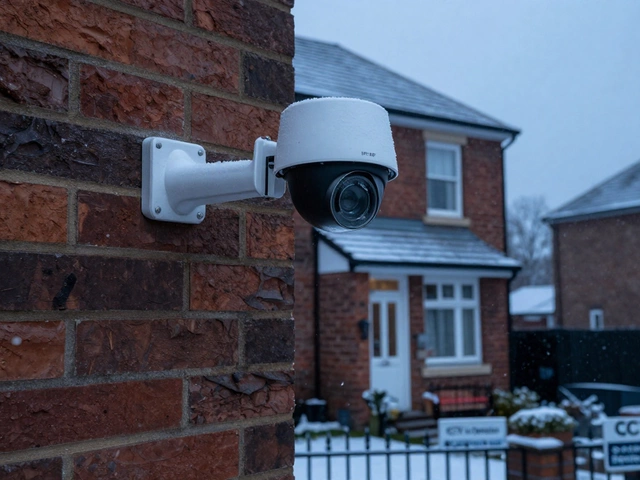Night vision goggles have long been regarded as a game-changer for military, law enforcement, and hobbyist applications, but can they truly work in total darkness? These devices seem magical, allowing human eyes to peer into the shrouded realm of night as if a curtain has been lifted. But the science behind this mystique is more nuanced than it first appears.
In this article, we'll unravel the mystery of how these goggles function, especially when the starlight or moonlight is not present to aid them. We'll address precisely whether it's possible for night vision technology to maintain clarity in circumstances of complete darkness. As we navigate the ins and outs of this incredible technology, the discussion will also touch on the latest innovations that enhance their capabilities.
- Understanding Night Vision Technology
- How Night Vision Goggles Operate
- Challenges in Complete Darkness
- Innovations in Night Vision
- Practical Tips for Using Night Vision Goggles
Understanding Night Vision Technology
Night vision technology is a fascinating field that has drastically reshaped our ability to see the world when the sun sets. Humans, unlike many nocturnal creatures, are not naturally equipped to move around in the dark. This limitation drove the innovation of devices that could enhance our vision after sundown, leading to the development of night vision goggles. These devices primarily rely on two core technologies: image intensification and thermal imaging. Each of these technologies serves a different function but ultimately collaborates to illuminate what our eyes can't see alone.
Image Intensification
Image intensification works by capturing small amounts of visible light and faint infrared light. The goggles amplify this light through specialized optics and conversion processes. Photons from low-light sources enter the goggles and are converted into electrons. These electrons are amplified through an electrical and chemical process. The increased number of electrons are transformed back into visible light, projecting a much brighter and clearer image. This method is highly effective in low-light conditions such as starlight or moonlight but is limited in total darkness as it requires some level of ambient light to function.Thermal Imaging
Thermal imaging, on the other hand, does not rely on any light source. Instead, it detects heat signatures from objects and translates these thermal variations into images. Everything with a temperature above absolute zero emits infrared radiation, and this radiation intensifies as an object becomes warmer. By capturing these variations, thermal imaging identifies objects based on their temperature differences with their surroundings. This method has proven incredibly useful not just at night but also in environments where visual obstruction would otherwise render standard vision useless. In many military and surveillance operations, the combination of these technologies offers unmatched nighttime surveillance capabilities.According to a report by the U.S. Department of Defense, "Night vision technology has transformed battlefield engagements, poignantly reducing the adversary's element of surprise." This revolutionary edge has extended beyond the military, influencing sectors such as wildlife observation and even maritime navigation.Despite their remarkable efficacy, night vision devices still have limitations in complete darkness. In such situations, thermal imaging tends to be more reliable, but ongoing research and technological advancements continue to push the boundaries of what's possible. The fusion of digital augmentation with traditional methods promises to extend our nighttime visual capabilities into realms previously thought unimaginable.
How Night Vision Goggles Operate
Understanding the operation of night vision goggles begins with the knowledge that these devices are designed to enhance vision in low-light conditions, not in the complete absence of light. Typically, night vision goggles utilize image enhancement technology. They collect minimal amounts of both infrared and visible light and amplify it thousands of times to allow the human eye to see clearly. This magic happens through a complex system, where the input light is processed through a photomultiplier tube. This tube is essential as it increases the light’s intensity by converting photons into electrons before using a screen to convert them back into visible light, thus creating the iconic green-tinted view we associate with night vision. Night vision depends on ambient light, such as moonlight or starlight, to function effectively. In this procedure, even infrared light, which is beyond the visible spectrum, plays a part. This infrared light, imperceptible to the human eye, can be detected by night vision goggles and is used to illuminate a scene.
While traditional image-enhancing goggles struggle in environments with no light at all, thermal imaging offers a different approach. Thermal devices detect heat signatures given off by living things or heat-radiating objects. A fascinating aspect is that thermal imaging does not rely on ambient light but rather on the heat emitted from objects or living beings. It captures the infrared radiation and turns it into an image that represents surface temperatures, thus creating visibility even in the darkest environments. This means that while image enhancement technology may falter in pitch black conditions without any light source, thermal imaging gadgets hold an advantage by bypassing the light dependency altogether. However, this technology might come with drawbacks, such as potential issues with image resolution and the inability to penetrate glass, affecting certain tactical operations that rely on clarity and detail.
Interestingly, the history of night vision dates back as far as World War II, when the necessity for such technology became critically evident during night raids and reconnaissance operations. Today's devices have evolved dramatically, benefitting from advanced technology and compact, more efficient design. A former Navy SEAL once described their experience, "
These goggles give you the eyes of an owl at night, changing the balance of power in adverse conditions." The continuous advancements promise even greater improvements in future goggles. Meanwhile, the search for making the technology truly effective in total darkness continues, with innovations increasingly blending image intensification and thermal imaging to navigate challenges. By combining these two technologies, manufacturers are striving to create devices that operate under diverse conditions.
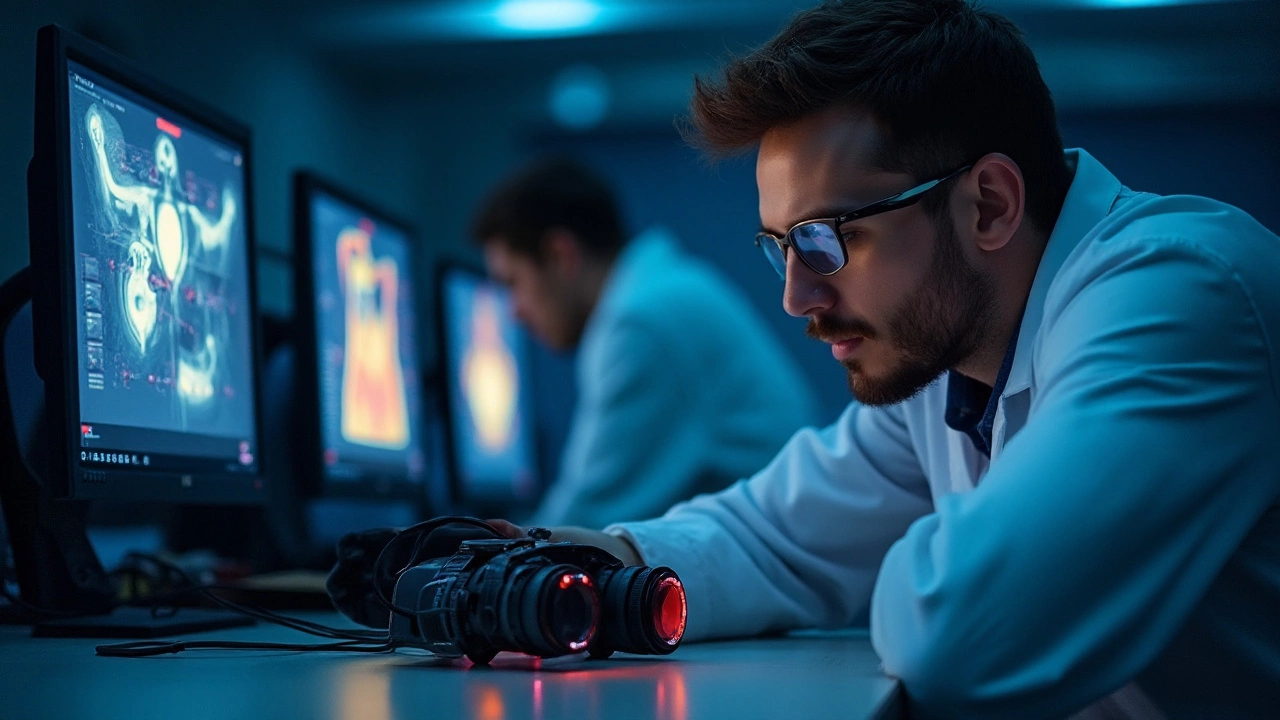
Challenges in Complete Darkness
When it comes to using night vision goggles, the biggest challenge emerges when total darkness is encountered. These devices typically rely on ambient light sources to amplify the existing light, thereby creating a visible image. However, in absolute darkness, the absence of light poses a significant challenge. These situations often arise in enclosed environments without natural light, where even the faintest hint of starlight or moonlight is unavailable. Because conventional night vision technology amplifies whatever light is available, it struggles greatly without any light input to amplify. Instead, alternative technologies, such as thermal imaging or active infrared illumination, may need to be relied upon.
Unlike the image intensification technology commonly used in night vision devices, thermal imaging relies on detecting the heat radiation emitted by objects. This allows for visibility in environments that are completely devoid of light. However, it's important to note that thermal imaging does not provide the same degree of detail as traditional night vision. While it effectively highlights thermal contrasts, discerning finer features can be challenging. Moreover, the successful application of thermal imaging technology is often reliant on specific environmental conditions. For instance, thermal imagery can become less effective when ambient temperatures are similar to the heat signatures of surrounding objects.
Many advancements have been made to overcome these hurdles. An exciting development is the use of active infrared illuminaries which emit a beam of infrared light that is invisible to the naked eye but detectable by night vision equipment. This can effectively illuminate a scene in complete darkness, enabling the goggles to generate a visible image. However, active infrared illumination requires a power source and can be detected by other infrared-sensitive equipment, which could be a potential drawback in covert operations. According to the U.S. Army's Night Vision and Electronic Sensors Directorate, incorporating these technologies can significantly extend the operational capabilities of night vision goggles in total darkness situations.
"The integration of active infrared technology with traditional night vision goggles has proven to be invaluable for night operations in environments devoid of ambient light," remarks Dr. Helen Robertson, a leading researcher in the field of optical technologies. Her insights emphasize the importance of technological fusion to address the diverse needs encountered in practical applications.
Additionally, new developments in digital night vision are beginning to shift the landscape. These devices convert the light into a digital signal, allowing users the possibility of enhancing the image with additional algorithms or artificial intelligence, further pushing the boundaries of what can be perceived. Although digital systems address some limitations, they also introduce new challenges, such as requiring a more substantial power supply and lag times in image processing.
Advanced Considerations
It is important to consider factors like weight and battery life when evaluating these technologies for use in total darkness. Active infrared and thermal imaging components add heft, and they consume energy rapidly, which means users must carefully plan power management during operations. As technology advances, the balance between functionality and practicality remains a crucial area of focus for developers pursuing the holy grail—the ability for night vision to effectively function anywhere, at any time, and under any circumstances.
Innovations in Night Vision
In recent years, the landscape of night vision technology has witnessed remarkable advancements that push the boundaries of what these devices can accomplish. No longer confined to traditional uses, night vision goggles now employ cutting-edge technologies that promise improved clarity, range, and versatility. Among these innovations is the advent of digital night vision, which harnesses digital imaging technology instead of the analog methods used by older-generation devices. This shift allows for significant improvements in image processing, providing more detailed and sharper images in various lighting conditions.
At the forefront of these innovations is the application of thermal imaging technology. Unlike traditional night vision that amplifies available light, thermal imaging detects infrared radiation, which is emitted by all objects based on their heat signature. This makes it invaluable for military and wildlife observation, as it can easily highlight living beings regardless of the surrounding ambient light. The integration of thermal imaging into night vision goggles offers a dual-mode functionality that enhances their utility in scenarios that transition between varying light levels.
One of the most promising developments is the emergence of color night vision technology. Traditionally, night vision images were monochrome, usually portrayed in grayscale or green. The introduction of color night vision provides a more natural and intuitive view, making it easier to interpret scenes and recognize objects. This technology maintains the benefits of light amplification, adding the capability to discern and identify objects in low-light conditions without losing critical details that could be obscured in a monochrome palette.
Additionally, manufacturers have been investing heavily in miniaturization and weight reduction of night vision devices, making them more user-friendly and less cumbersome for prolonged use. These ergonomic improvements enhance the feasibility of using these devices in various fields, from tactical operations to outdoor recreational activities. Designers are incorporating advanced materials and lightweight composites that help preserve durability while making the devices more comfortable to wear for extended periods.
It's worth mentioning the increasing use of augmented reality (AR) integration with night vision systems. This development adds a digital overlay to the user's view, providing real-time data, maps, and navigation information. Such enhancements are particularly beneficial for military applications, enabling soldiers to have crucial situational awareness without diverting attention from the task at hand. Many units now come equipped with GPS, compass functions, and wireless data transfer capabilities, transforming them into multipurpose tools on the field.
An interesting milestone in the development of night vision technology is its accessibility to the civilian market. With more affordable entry-level options available, enthusiasts and professionals alike can now experience night vision capabilities previously reserved for specialized sectors. This democratization of technology has fostered a burgeoning community of innovators and users who continue to explore its potential in security, surveillance, and even filmmaking. It's an exciting time to witness the evolution of night vision devices as they become an indispensable part of modern technology, providing us not only with the ability to see in the dark but to see the future unfolding in new, unexpected ways.
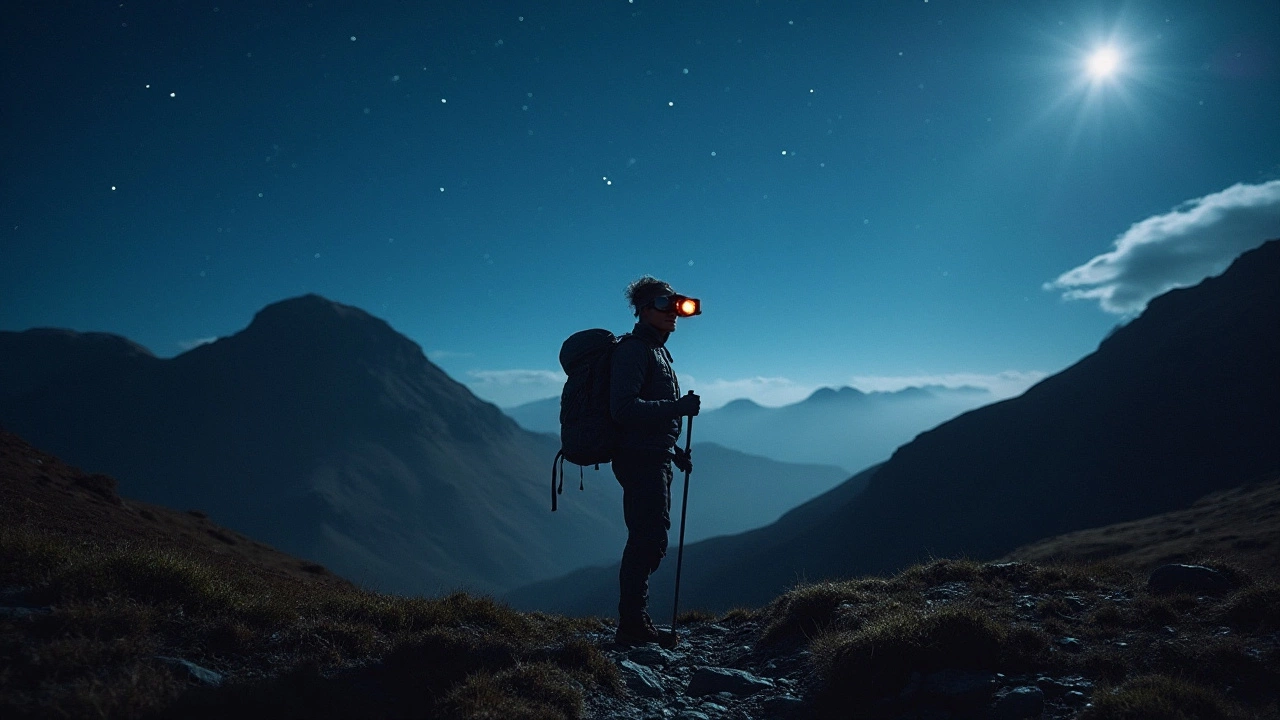
Practical Tips for Using Night Vision Goggles
Leveraging the full potential of night vision goggles requires understanding and practice. These tools are not just for slipping on and wandering into the dark; they need some finesse to be employed effectively. First, it's crucial to acknowledge that these goggles amplify available light. So, while they're not typically designed for absolute blackness, knowing how to use ambient light sources around you can dramatically improve visibility. A crescent moon or even distant city glow might just be enough to turn a shadowy path into a visible terrain. Always scout for even the dimmest light sources to enhance the performance of your goggles.
An essential tip you cannot ignore is proper adjustment for clarity and comfort. Your goggles will usually come with focus adjustments for both objective and eyepiece lenses. Take time to fine-tune these settings to your unique eyesight. This alleviation of eye strain is particularly crucial if you're planning to wear them for extended periods. Patience here pays off with a more comfortable experience and sharper clarity. Many users make the mistake of quick adjustments and miss the enhanced vision that comes with careful tweaking.
Another aspect to consider is the surrounding environment. Be mindful of what you're pointing your goggles at. Bright lights can short-circuit the technology in older models, leading to a blackout. With modern digital night vision goggles, this risk is reduced, but it still pays to avoid sudden exposure to intense light sources. You should always be aware of animal activity and other disturbances that might cause sudden, bright interruptions. Understanding noise sources—both visual and auditory—can make your nighttime exploration much smoother.
"The key to mastering any technology is patience and understanding," notes former Green Beret and technology expert Jason Thompson. "Using night vision goggles efficiently isn't just about flicking them on; it's about immersing oneself in a world that you're not designed to see naturally."
One cannot underestimate the importance of battery management. Blame it on overlooked foresight, but more operatives and adventurers have been left literally in the dark due to poor battery practices than can be imagined. Always carry an extra set of batteries and check your charge before each outing. Many goggles have indicators showing battery life, but always err on the side of early replacement rather than risking a cut-off. In environments where recharging is impractical, having a continuous supply of fresh power can be reassuring.
Portability and durability should not be overlooked either. Invest in a good quality carrying case that can withstand your environment. Those dabbling in outdoor adventures quickly learn how essential protection is against the elements. Dust, moisture, and unkind drops are constant threats. By safeguarding your goggles, you prolong their service life and efficiency, allowing you to brave more thrilling explorations without interruptions.
Finally, take the time to familiarize yourself with the different modes and capabilities if your goggles come with them. Some advanced models offer features like thermal imaging combined with night vision, allowing you to spot differences in heat, which can be instrumental in identifying wildlife or human presence that conventional vision might miss. Explore these options before setting out, so you are not fumbling in a crucial moment. Knowing your equipment inside out could spell the difference in achieving not just functionality but mastery over night vision technology.

